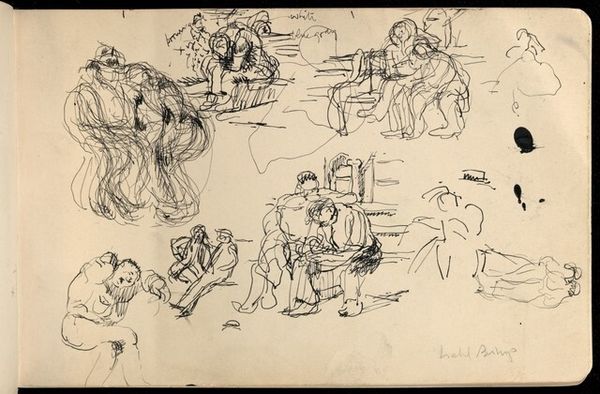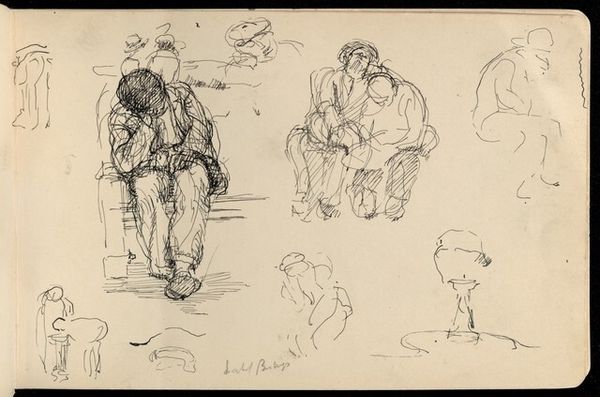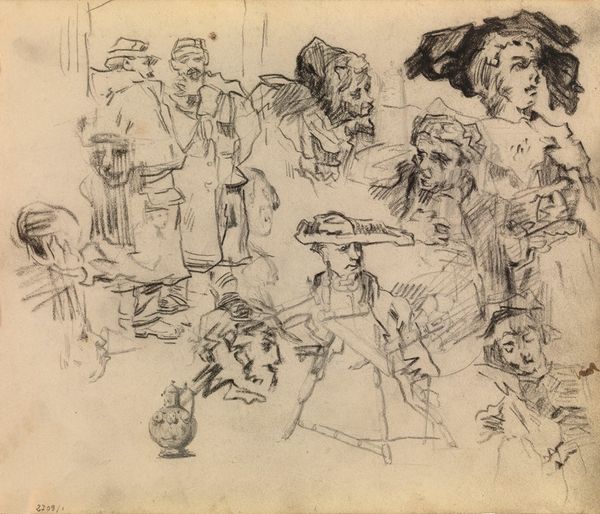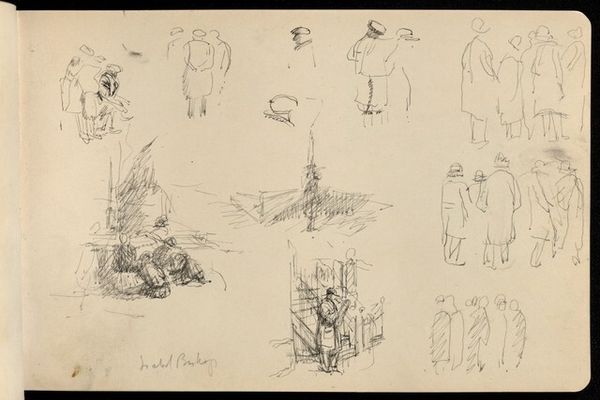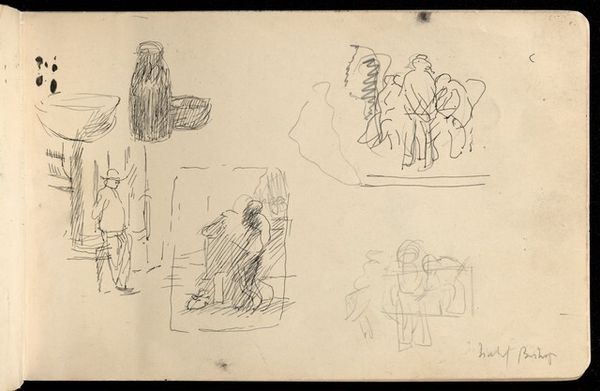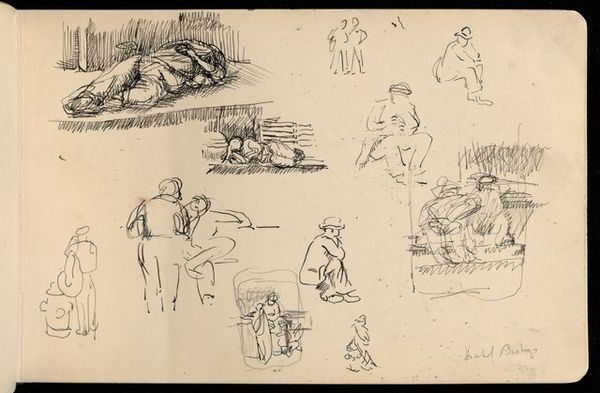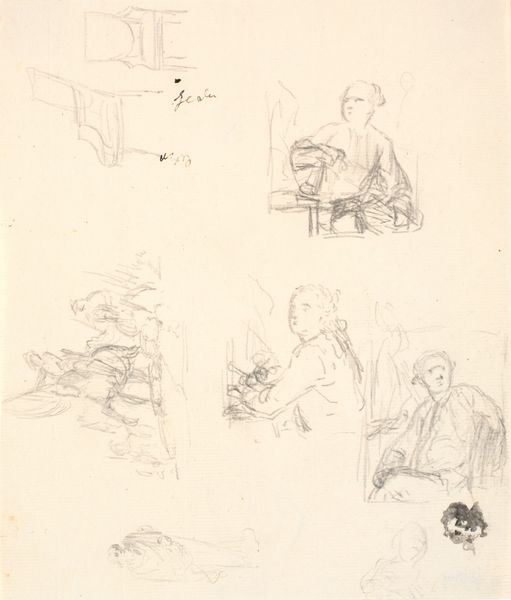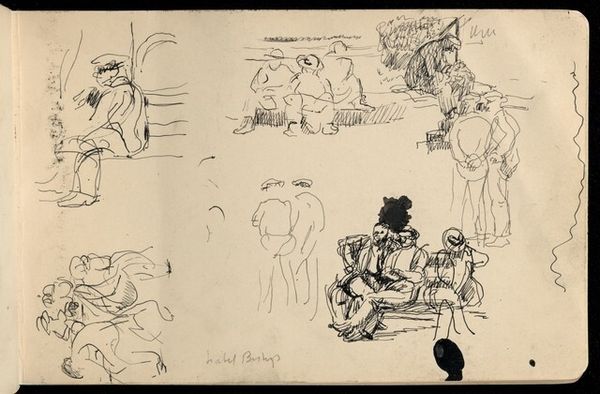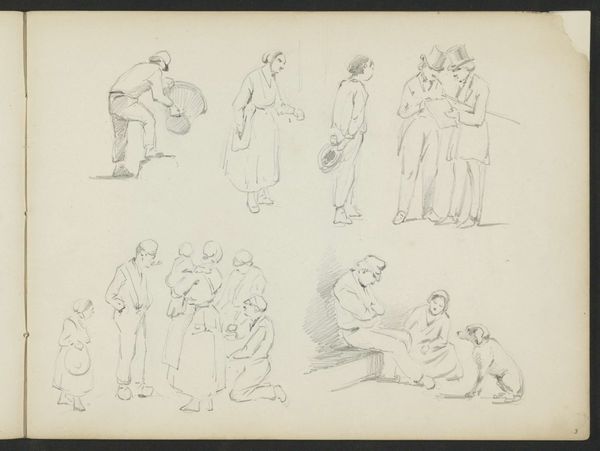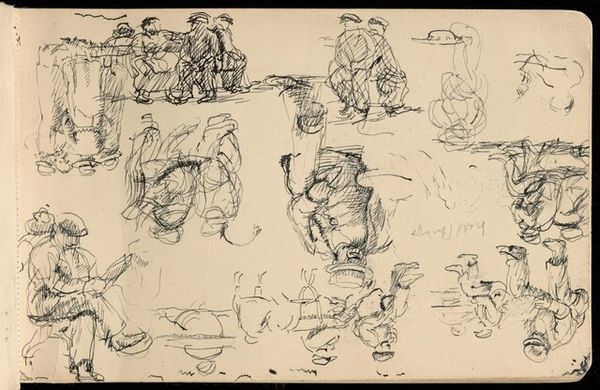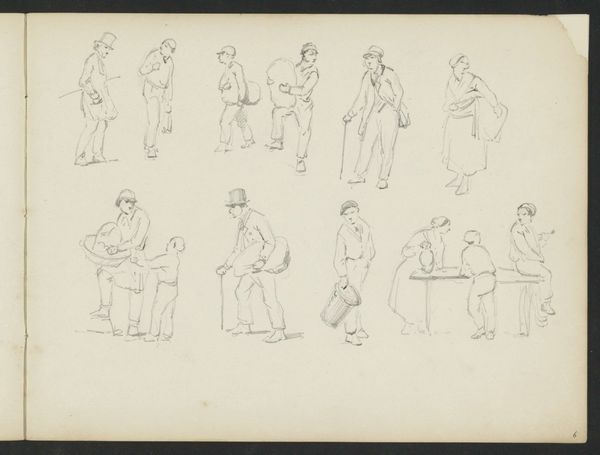
drawing, paper, ink
#
portrait
#
drawing
#
figuration
#
paper
#
ink
#
modernism
Copyright: National Gallery of Art: CC0 1.0
Curator: Here we have Isabel Bishop's "Early Sketchbook", created sometime between 1928 and 1936. Bishop was fascinated by the everyday movements and interactions of people in urban environments. Editor: My first thought? Fleeting moments captured on paper. Like little visual poems scrawled across the page. Each grouping is an emotion frozen in ink. Curator: Precisely. Notice the density of lines, the build-up in certain areas to suggest shadow and volume. Bishop's technique here highlights form through a structuralist approach. The composition reflects the transient, often hurried nature of city life. Editor: They’re like echoes of gestures, right? Especially the figures bunched together—you can almost hear the murmur of a conversation, or feel the press of bodies on a crowded street corner. The leaning figures evoke tiredness but are softened by affection. There's so much tenderness here. Curator: Indeed. Semiotically, the repetition of human forms signifies the collective experience, while the blank space separating each vignette invites viewers to complete the narrative. There is a visual rhythm established across the sketchbook page. Editor: See, for me, that white space feels more like a breath, you know? Little pauses that give the sketches room to speak, room to resonate. Bishop lets her marks dance without crowding each other, and she does the same for us, letting us fill in the details, to feel something. Curator: The beauty of this modern approach is its universality. Regardless of specific narratives, one gets a tangible sense of metropolitan energy—a testament to Bishop's acute observational prowess. Editor: Absolutely. These sketches are windows into another time, yet also so incredibly familiar, still echoing the rhythm of human interaction today. Like catching glimpses of life unfolding. A true moment of reflection captured for us all. Curator: Indeed. And by emphasizing technique and formalism, our understanding deepens into the intention and effect of this unique art piece. Editor: Which reminds us how the seemingly simple is quite intricate in the most moving ways. Thank you, Bishop, for sharing.
Comments
No comments
Be the first to comment and join the conversation on the ultimate creative platform.
